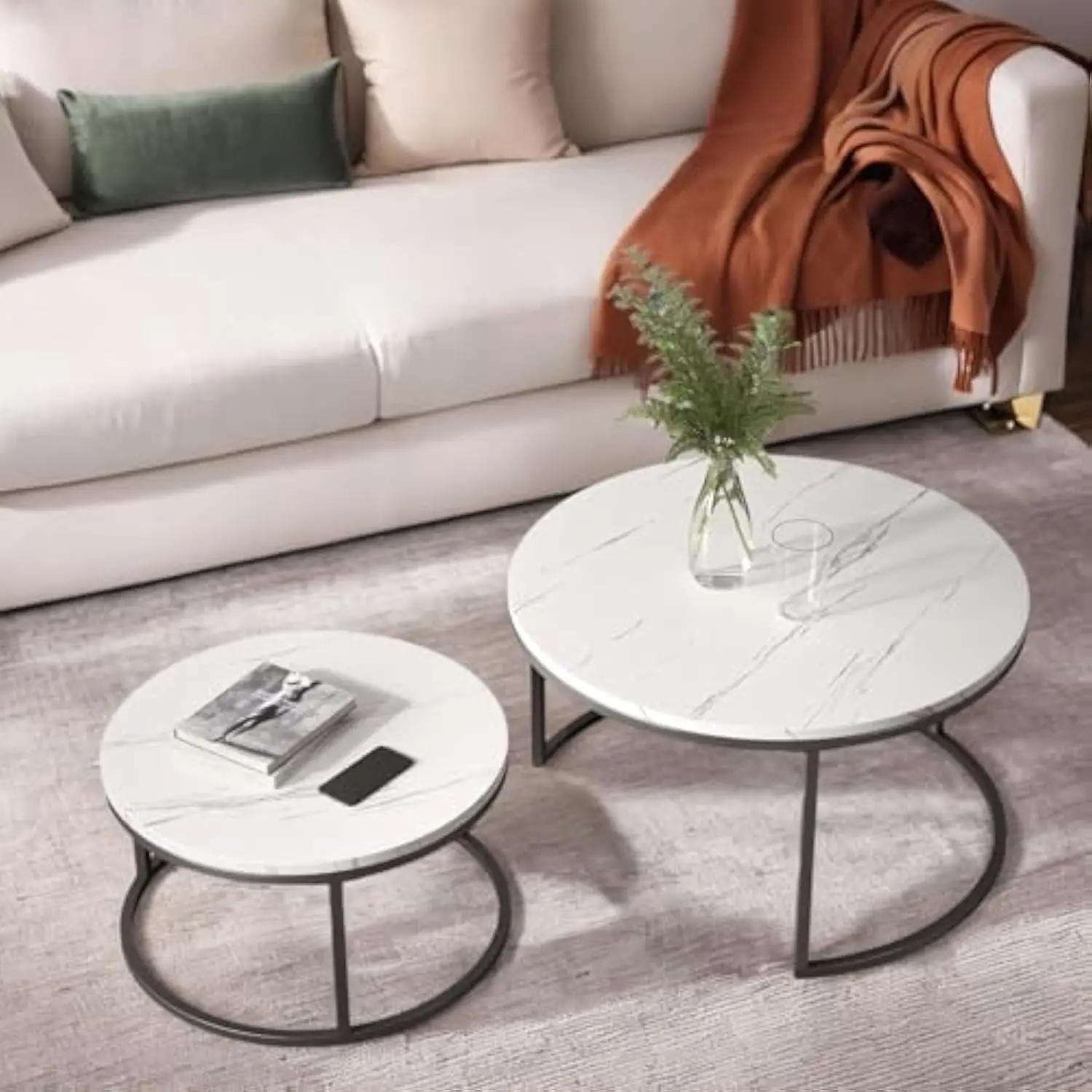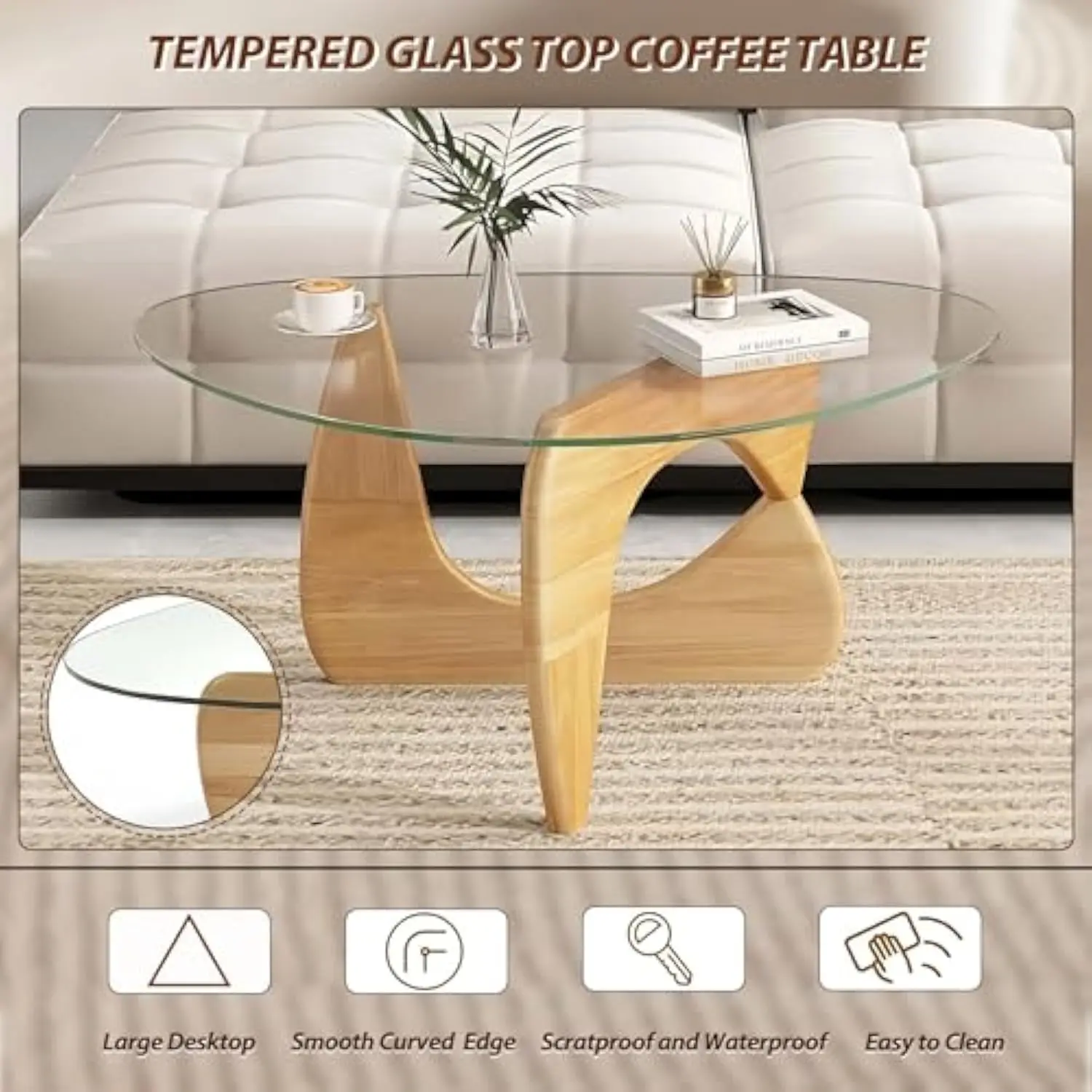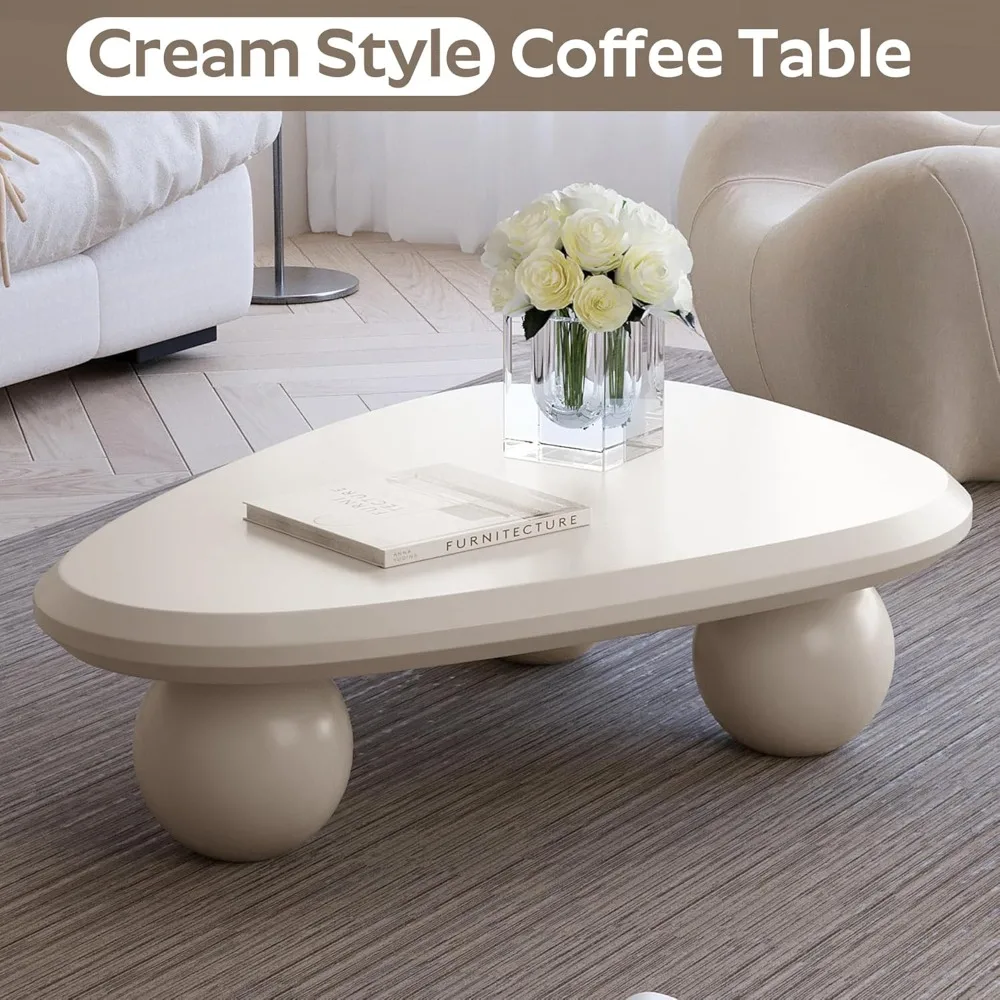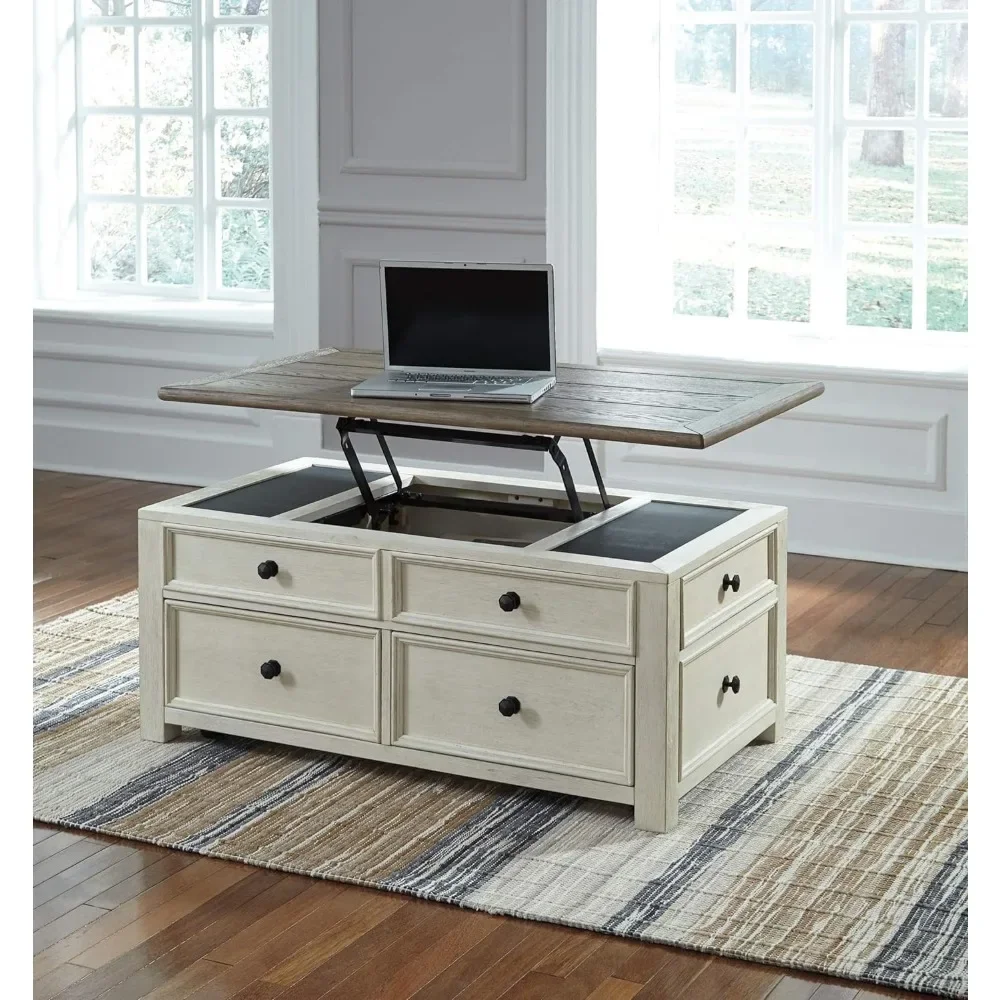Why Space-Saving Coffee Tables Are Essential for Modern Homes
In today’s urban landscape, living spaces are becoming increasingly compact. The average apartment size in metropolitan areas has decreased by nearly 10% over the past decade, creating a growing need for furniture that can adapt to smaller footprints without sacrificing functionality or style.
Space-saving coffee tables represent more than just smaller versions of traditional tables—they’re thoughtfully designed pieces that serve multiple purposes while maintaining visual appeal. These versatile furnishings have become essential components of modern homes where every square foot matters.
The benefits of space-saving coffee tables include:
- Maximizing limited floor space in apartments and compact homes
- Providing essential functionality without overwhelming the room
- Creating more organized living areas by reducing clutter
- Adapting to changing needs throughout the day or week
- Maintaining style and aesthetic appeal despite size constraints
With the rise of remote work transforming living rooms into impromptu offices, the need for adaptable furniture has never been greater. Intelligent black mid-century coffee tables offer an elegant solution that aligns with both space constraints and design sensibilities.
For those navigating the challenges of small-space living, today’s mid-century modern small coffee tables deliver the perfect balance of form and function, proving that limited square footage doesn’t mean limiting your style or comfort.
Transformative Types of Space-Saving Coffee Tables
Multi-Functional Designs That Maximize Utility
The most innovative space-saving coffee tables offer multiple functions in a single piece of furniture, eliminating the need for additional pieces that would otherwise consume precious floor space.
Lift-top coffee tables feature ingenious mechanisms that allow the surface to elevate to different heights. This functionality transforms your coffee table into:
* A convenient work surface for laptops (typically raising to 24-30 inches/61-76 cm)
* A dining surface for casual meals
* An accessible storage solution with hidden compartments beneath
Mid-century modern lift-top coffee tables combine this practical functionality with clean lines and timeless design elements. The space efficiency of these designs becomes particularly evident when you consider that a separate desk typically requires 10-15 square feet of floor space—area that most small apartments simply can’t spare.
Convertible coffee tables offer even more dramatic transformations, changing shape and function as needed. These ingenious pieces can expand from coffee table height to dining table height, or adjust in width to accommodate different scenarios. Some lift-top coffee tables for small spaces can save approximately 30% of floor space compared to having separate pieces for each function.
Expandable coffee tables feature extending surfaces or pull-out components that increase usable area only when needed. This approach keeps your footprint minimal most of the time while providing flexibility for hosting guests or tackling larger projects.
Clever Storage Solutions to Eliminate Clutter
Storage-focused coffee tables address one of the biggest challenges in small spaces: containing clutter without adding bulky storage furniture.
Tables with integrated drawers offer organized compartments that keep remote controls, magazines, and everyday items within reach but out of sight. Unlike traditional designs with a single open shelf, drawer systems allow for proper organization of smaller items that would otherwise create visual noise.
Hidden compartments and lift-top storage provide substantial capacity for larger items like throw blankets, board games, or even extra pillows. Quality designs feature smooth-operating hinges and stays that make accessing these spaces effortless. The storage capacity in some models can replace a separate storage ottoman or chest, saving approximately 4-6 square feet of floor space.
Open shelving options strike a balance between display and storage, allowing you to showcase select decorative pieces while maintaining books or baskets below. This approach keeps the visual weight lighter than solid designs while still offering practical organization.
Ottoman coffee tables combine soft seating with hidden storage and often feature removable tops that double as trays. These versatile pieces work particularly well in casual settings or where additional seating is frequently needed.
The wide variety of mid-century modern coffee tables with storage features demonstrates how functional requirements can be met without compromising on design integrity or quality.
Modular and Flexible Options for Adaptable Living
Adaptability defines truly effective space-saving furniture, allowing pieces to evolve with your changing needs throughout the day or as your living situation changes.
Nesting coffee tables represent perhaps the most elegant space-saving solution, featuring two or three tables of decreasing size that stack together when not in use. When entertaining guests, these can be separated to provide multiple surface areas throughout the room. When nested, they consume only the footprint of the largest table—saving up to 70% of the space that separate tables would require. Nesting coffee tables offer remarkable versatility for rooms that need to serve multiple purposes.
Stackable designs take a vertical approach to space-saving, allowing components to be stacked when not needed. Unlike nesting tables that fit underneath each other, these pieces stack directly on top, creating a completely different configuration.
C-shaped/side tables serve as coffee table alternatives that can tuck partially under sofas, eliminating the need for a traditional coffee table altogether. These pieces have the added advantage of bringing surfaces closer to seating for convenient access.
Mobile coffee tables with wheels offer the ultimate flexibility, allowing you to easily reconfigure your space for different activities or simply move the table aside when floor space is needed. For small apartments that need to transform from living room to exercise space or dance floor, this mobility proves invaluable.
Maximize small spaces with nesting coffee tables by using them strategically throughout your home—not just in living areas but also as bedside tables or occasional surfaces in transitional spaces.

Visually Lightweight Designs That Create Space Illusion
The visual weight of furniture significantly impacts our perception of space. Clever designs use materials and forms that create an illusion of openness even when physical space is limited.
Glass and acrylic tables use transparency to virtually disappear within a room. Light passes through these materials, eliminating visual barriers and making small spaces feel more expansive. Glass top coffee tables reflect light throughout the room, brightening dark corners and creating a sense of airiness that solid tables simply cannot achieve.
Slim profile designs maintain essential surface area while minimizing bulkiness. Tables with thinner tops (typically 1-2 inches/2.5-5 cm) appear less dominant in the room while providing the same functionality.
Tables with elevated designs/slender legs create valuable sightlines beneath the furniture. This uninterrupted view of the floor extends the perceived dimensions of the room—a technique interior designers often use to make spaces feel larger than they actually are. Some glass coffee table ideas for open spaces incorporate this principle beautifully.
Round and oval shapes eliminate sharp corners that can impede movement in tight quarters. The smooth flow around curved edges means you can place these tables closer to walking paths without creating hazards, effectively giving you more usable space.

How to Choose the Perfect Space-Saving Coffee Table for Your Home
Measuring for the Ideal Size and Proportion
Selecting the right dimensions for your coffee table is crucial for both functionality and proportion. Follow these guidelines to ensure your table fits perfectly in your space:
- Height: The ideal coffee table stands 16-18 inches (41-46 cm) tall, aligning approximately with your sofa’s seat height or 1-2 inches lower
- Length: For balanced proportions, choose a table that’s about two-thirds the length of your sofa
- Width: In tight spaces, keep width to 18-24 inches (46-61 cm) to maintain comfortable pathways
- Clearance: Allow 12-18 inches (30-46 cm) between the table and sofa for comfortable leg room, and 24-30 inches (61-76 cm) between the table and other furniture pieces for easy movement
When measuring your space, use painter’s tape to outline the table’s footprint on the floor. This simple step helps you visualize how the piece will fit and how traffic will flow around it before making a purchase.
For detailed guidance specific to compact living environments, understanding coffee table sizes for small living rooms can help you avoid the common mistake of choosing oversized pieces that dominate limited spaces.
Material Selection for Durability and Visual Lightness
The material of your coffee table affects not only its visual impact but also its durability and maintenance requirements.
| Material | Visual Impact | Durability | Maintenance | Weight | Style Compatibility |
|---|---|---|---|---|---|
| Glass | Creates visual openness, reflects light | Moderate (tempered is stronger) | Requires frequent cleaning, shows fingerprints | Visually light, physically heavy | Contemporary, modern, mid-century |
| Acrylic/Lucite | Nearly invisible, expands visual space | Good, resists scratches | Simple cleaning, attracts dust | Very light | Modern, glam, eclectic |
| Wood | Adds warmth, varies by finish | Excellent with proper care | Moderate, needs occasional polishing | Varies by type | Versatile across styles |
| Metal | Industrial or elegant depending on finish | Very high | Minimal | Moderate to heavy | Industrial, modern, mid-century |
| Combination | Best of both materials | Varies | Varies by components | Usually balanced | Highly adaptable |
Mid-century modern design typically favors warm woods like walnut or teak with tapered legs and clean lines. These materials create a perfect balance of visual lightness while maintaining durability—a principle Hearth Forms honors in their collection.
When styling different materials, styling a black mid-century coffee table requires different approaches than glass or light wood tables, particularly in small spaces where balance is essential.
Shape Considerations for Maximum Space Efficiency
The shape of your coffee table significantly impacts both its functionality and how it affects movement through your space.
Round and oval tables offer several advantages for small spaces:
* Eliminate sharp corners that can cause painful collisions
* Create smoother traffic flow with their curved edges
* Allow easier navigation in tight spaces
* Often take up less visual space than rectangular options
Rectangular and square tables provide maximum surface area for their footprint, making them practical for:
* Providing ample display space
* Accommodating multiple users at once
* Fitting neatly between standard sofa arrangements
* Creating visual structure in open-concept spaces
Triangular and irregular shapes can be ideal solutions for challenging room layouts:
* Fit effectively into corner arrangements
* Work well with sectional sofas
* Add visual interest to minimalist spaces
* Maximize unusual floor plans
For specific guidance on choosing the optimal shape for your particular space constraints, best shape coffee table for small space considerations include factors like seating arrangement, primary traffic patterns, and existing furniture proportions.
Smart Styling Techniques for Space-Saving Coffee Tables
Minimalist Decorating Approaches for Small Surfaces
When styling a space-saving coffee table, restraint is key. Thoughtful minimalist approaches ensure your table remains functional while still expressing your personal style.
Effective minimalist coffee table styling includes:
- Following the “rule of three” by grouping a tall item, a medium item, and a small item together
- Using a single tray to corral small objects, creating a sense of intentional organization
- Varying heights and textures within a limited color palette for visual interest without chaos
- Choosing fewer, more meaningful objects rather than numerous small items
- Maintaining at least 50% of the surface free for practical use
When selecting decorative objects, scale matters tremendously. Items that are too large will overwhelm a small table, while pieces that are too small can appear cluttered or insignificant. Decorating black mid-century coffee tables requires particular attention to contrast and balance to achieve a sophisticated look that doesn’t dominate the room.

Creating Visual Harmony in Limited Spaces
In small spaces, every element must work together cohesively to avoid visual fragmentation that can make rooms feel smaller and chaotic.
To create harmony around your space-saving coffee table:
- Choose materials and finishes that complement your existing furniture rather than competing with it
- Create deliberate negative space around the table to let the room “breathe”
- Balance the visual weight across different areas of the room—if your table is visually light, you may have freedom for more substantial pieces elsewhere
- Consider how lighting interacts with your table—glass and metallic surfaces reflect light, while dark woods absorb it
- Use textiles like runners or small rugs to define the seating area without adding bulk
Mid-century modern design principles naturally support this harmonic approach through clean lines, organic forms, and functional beauty. For inspiration that works particularly well in compact spaces, black mid-century modern coffee table styles showcase how these timeless pieces can anchor a small living area without overwhelming it.
Common Questions About Space-Saving Coffee Tables
Are Lift-Top Coffee Tables Practical for Everyday Use?
Lift-top coffee tables offer tremendous versatility, but prospective buyers often question their long-term practicality. Here’s what to consider:
Pros:
* Quality mechanisms can withstand 10+ years of regular use
* Weight capacity typically ranges from 15-40 pounds (7-18 kg), sufficient for laptops and meals
* Creates an instant work surface at proper ergonomic height
* Eliminates the need for TV trays or additional desks
* Most operate with minimal effort using pneumatic lifts or springs
Cons:
* Lower-quality mechanisms may wear out with frequent use
* Some designs have limited weight capacity
* Moving items on the table before lifting can be cumbersome
* May require occasional maintenance or tightening
For most households, especially those where space optimization is crucial, the benefits outweigh potential drawbacks. Understanding the features of black mid-century coffee tables can help you identify quality construction that will stand up to daily use.
How Do Round vs. Rectangular Tables Compare for Small Spaces?
The round vs. rectangular debate centers on both practical and aesthetic considerations for small spaces:
Round Tables:
* Create better flow with no sharp corners to navigate around
* Typically allow 25% more walking space around the perimeter
* Work well in square rooms or with unconventional seating arrangements
* Encourage more social interaction with their inclusive shape
* Often appear less bulky visually
Rectangular Tables:
* Provide approximately 15-20% more surface area in the same footprint
* Fit more naturally between standard sofa arrangements
* Offer more stability for items placed near edges
* Create cleaner lines that align with most room layouts
* Better accommodate multiple activities simultaneously
The best choice depends largely on your room’s traffic patterns and primary use. Oval coffee tables enhance room flow particularly well in narrower spaces where movement around furniture is constrained.
Innovative Space-Saving Coffee Table Features Worth Considering
Hidden Technology Integration for Modern Living
Today’s innovative coffee tables seamlessly incorporate technology to enhance functionality without adding clutter:
- Built-in wireless charging pads eliminate the need for visible charging stations and cords
- USB ports and power outlets discreetly integrated into drawers or sides keep devices powered
- Bluetooth speakers embedded within table bases provide room-filling sound without separate speaker units
- Smart home control features allow table-top operation of lights, temperature, and entertainment systems
- Temperature-controlled surfaces protect both the table and your beverages
These technological integrations particularly shine in small spaces where separate tech accessories would consume valuable surface area or require additional furniture. For more ways technology enhances space efficiency, maximizing black mid-century coffee tables explores how modern features complement classic designs.
Mid-Century Modern Solid Wood Coffee Tables, Mid-Century Modern Teak Coffee Tables
$879.95 Select options This product has multiple variants. The options may be chosen on the product pageMid-Century Modern Danish Coffee Tables, Mid-Century Modern Oval Coffee Tables, Mid-Century Modern Solid Wood Coffee Tables
$390.05 Select options This product has multiple variants. The options may be chosen on the product pageMid-Century Modern Coffee & End Table Sets, Mid-Century Modern Coffee Table Sets, Mid-Century Modern Oval Coffee Tables
Price range: $257.48 through $331.04 Select options This product has multiple variants. The options may be chosen on the product pageMid-Century Modern Glass Top Coffee Tables, Mid-Century Modern Glass Top Side & End Tables
$460.58 Select options This product has multiple variants. The options may be chosen on the product pageMid-Century Modern Glass Top Coffee Tables, Mid-Century Modern Vintage Coffee Tables, Mid-Century Modern Vintage Side & End Tables
$725.36 Select options This product has multiple variants. The options may be chosen on the product pageMid-Century Modern Lift Top Coffee Tables, Mid-Century Modern Square Coffee Tables
$454.73 Select options This product has multiple variants. The options may be chosen on the product page
Environmentally Conscious Space-Saving Designs
Sustainability and space efficiency naturally complement each other, as both focus on reducing excess and maximizing resources:
- Sustainable materials like bamboo and reclaimed woods offer durability while minimizing environmental impact
- Multi-functional designs reduce the total number of furniture pieces needed, decreasing overall consumption
- Quality construction ensures longevity, keeping furniture out of landfills for decades
- Adaptable pieces that transform as needs change eliminate the waste of replacement furniture
- FSC-certified woods and water-based finishes minimize chemical exposure in small spaces
The mid-century modern design philosophy embraced by Hearth Forms aligns perfectly with these principles—focusing on quality materials, timeless aesthetics, and functional design that transcends trends. This approach not only conserves physical space in your home but also reduces your overall environmental footprint.
The Future of Small Space Coffee Table Design
As urban living continues to evolve, coffee table designs for compact spaces are advancing in exciting directions:
- Ultra-thin materials and advanced engineering are creating stronger tables with even smaller profiles
- Transformable designs are becoming more intuitive, requiring less effort to convert between functions
- Sustainable materials are being incorporated in innovative ways that maintain durability
- Modular systems are evolving to allow complete customization based on changing needs
- Smart furniture with app integration is emerging to optimize space usage based on daily patterns
While these innovations introduce exciting possibilities, they continue to build upon the fundamental principles that have made mid-century modern design enduringly relevant: clean lines, functional beauty, and quality craftsmanship. The best space-saving coffee tables—regardless of technological advances—will always prioritize human-centered design that enhances daily living.
For small space dwellers, the future promises coffee tables that don’t just save space but actively enhance it through thoughtful design and innovative functionality—proving that living with less square footage doesn’t mean living with less style or comfort.







